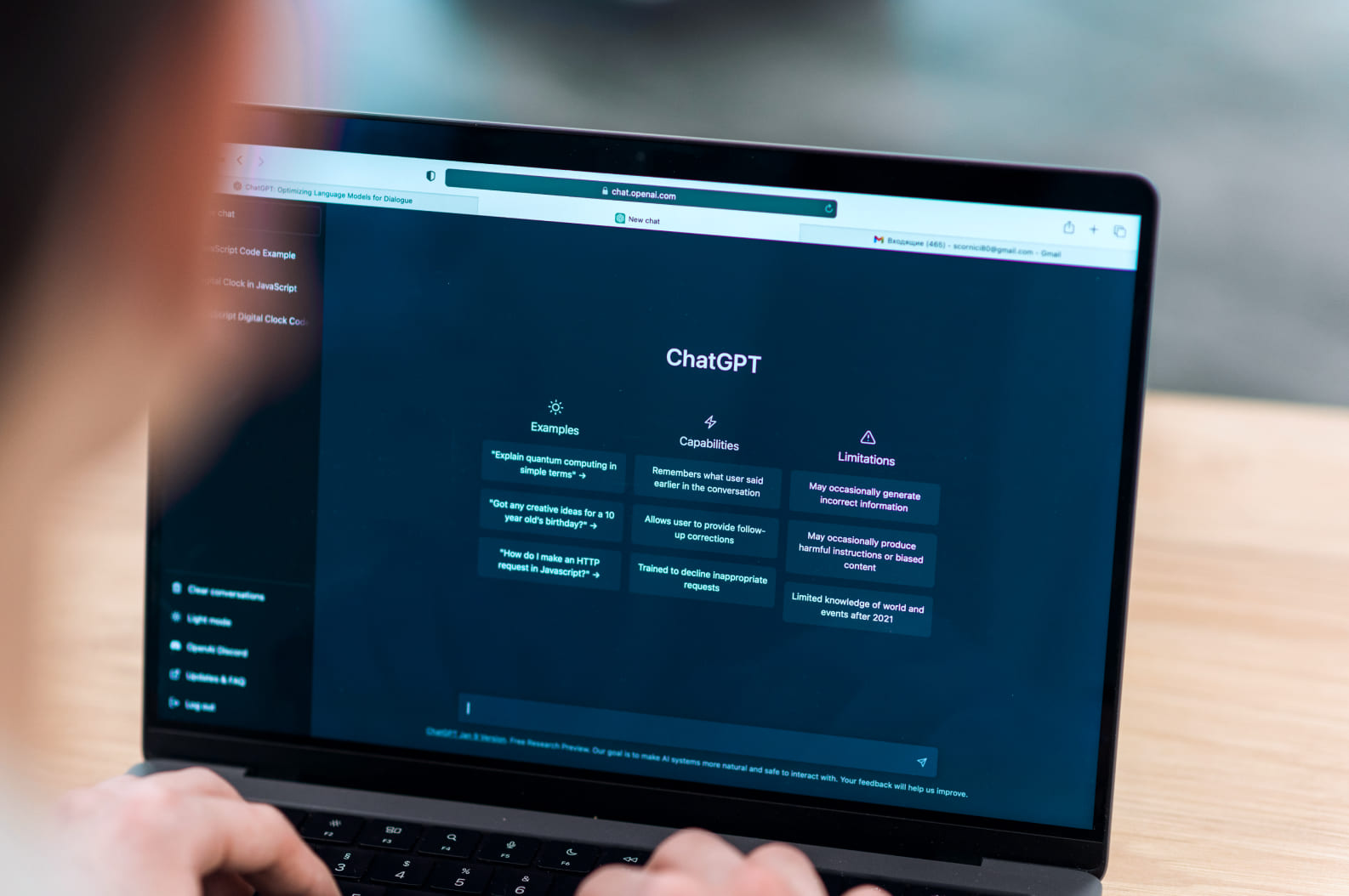Why modernizing legacy applications is crucial for digital transformation
What are legacy applications?
Legacy applications refer to outdated software applications or systems that are no longer being actively developed, supported, or maintained by their original developers. These applications often use older technologies and programming languages that may be difficult to maintain and update.
Legacy applications can pose significant challenges to organizations that rely on them, as they may be prone to security vulnerabilities, compatibility issues, and other problems that can impact business operations. In some cases, organizations may need to continue using legacy applications due to their critical role in the organization’s operations. However, it may be necessary to invest in updates or replacements to ensure that they remain functional and secure.
Why are legacy applications still in use?
There are several reasons for why legacy applications are still in use:
- Cost: Replacing a legacy application can be a costly process, especially if the application is deeply integrated into the organization’s infrastructure. For some organizations, the cost of maintaining and supporting the legacy application may be lower than the cost of replacing it.
- Complexity: Legacy applications can be highly complex, and replacing them with newer systems can require significant effort and resources. In some cases, it may be challenging to replicate the functionality of a legacy application in a modern system, which can make replacement impractical.
- Compatibility: In some cases, legacy applications may be required to interface with other legacy systems or software that cannot be easily replaced. This can create a situation where the legacy application must maintain compatibility with other systems.
- Regulatory requirements: In some industries, regulatory requirements may require the use of specific software systems or technology. Legacy applications that meet these requirements may need to be maintained to ensure compliance.
While legacy applications can present challenges, they can also provide useful functionality and support critical business processes, making their continued use necessary.
What is application modernization?
Application modernization refers to the process of updating or replacing legacy software applications with modern, cloud-native, or cloud-compatible applications. This process can involve several different strategies, including:
REPLATFORMING
This involves moving a legacy application to a more modern infrastructure, such as a cloud-based platform. This can help to improve scalability and reduce costs by taking advantage of cloud computing resources.
REFACTORING
This involves making changes to the underlying code of a legacy application to make it more efficient and easier to maintain. Refactoring can help to reduce technical debt and improve the performance of the application.
RE-ARCHITECTING
This involves redesigning the architecture of a legacy application to take advantage of modern design patterns and best practices. This can help to improve scalability, flexibility, and resilience.
REBUILDING
This involves completely rebuilding a legacy application from scratch using modern technologies and best practices. While this can be a time-consuming and expensive process, it can help to create a more scalable, efficient, and maintainable application.
Why consider application modernization for internal legacy systems?
Application modernization can benefit organizations by updating their internal legacy systems by increasing efficiency, automating tasks, improving security, and ensuring scalability. It can also save costs by reducing maintenance costs and avoiding downtime. Additionally, modernization allows for easier integration with other systems and technologies. Modernization efforts can improve internal legacy systems’ performance, scalability, and security while enhancing efficiency and reducing maintenance costs.
The challenges of legacy application modernization
Application modernization can be a complex process, and there are several challenges that organizations may face when modernizing their legacy applications:
- Complexity: Legacy applications with large code bases and custom integrations can be highly complex. Modernizing these applications requires significant effort and resources to fully understand and document the existing system.
- Compatibility: Legacy applications may be integrated with other legacy systems or third-party applications that are not easily replaceable. Modernizing these applications can require careful consideration of compatibility issues to ensure they continue functioning as expected.
- Data migration: Legacy applications may contain large amounts of data that need to be migrated to the new system. This can be a time-consuming and error-prone process that requires careful planning and execution.
- Technical debt: Legacy applications may have accumulated technical debt over time, including outdated code, inefficient processes, and other issues. Modernizing these applications can require significant effort to address these issues and ensure that the new system is efficient and maintainable.
- User resistance: Users may resist changes in their workflows or learning a new system. This can create challenges in adopting the new system and may require additional training or support.
- Cost: Application modernization can be expensive, especially if the legacy application is deeply integrated into the organization’s infrastructure. Organizations may need to weigh the cost against the benefits of application modernization carefully.
Prior to modernization, organizations should thoroughly assess the challenges and risks involved, and seek guidance from experienced professionals to ensure a well-planned and properly executed process. At Reenbit, we have extensive experience providing modernization services and are available to assist.
Benefits of legacy application modernization for digital transformation
There are numerous benefits of application modernization, let’s discuss a couple of them:
- FLEXIBILITY TO CREATE NEW FEATURES & SERVICES
Legacy applications can be rigid and inflexible, making it difficult to add new functionality or services. This can be a significant barrier to digital transformation, often requiring organizations to rapidly develop and deploy new services to meet changing customer demands and market conditions. By modernizing legacy applications, organizations can create more flexible and modular systems that are easier to update and modify. This can help to reduce the time and effort required to develop new features and services and can help organizations to respond more quickly to changing market conditions and customer needs.
For example, a legacy banking application may have been designed to support a limited set of services, such as checking and savings accounts. Modernizing this application could involve creating a modular, microservices-based architecture that allows for the easy addition of new services, such as mobile banking, peer-to-peer payments, or investment management. This would enable the bank to respond quickly to changing customer demands and market conditions and to remain competitive in a rapidly expanding market.
- ENHANCED PRODUCTIVITY
Legacy applications can impede business processes and lower productivity due to their inefficiency and slow performance. Application modernization can enhance performance, minimize downtime, and enable employees to work more efficiently, thus improving overall productivity.
For example, a legacy customer relationship management (CRM) system may be slow to load and difficult to navigate, which can slow down sales teams and reduce their productivity. Modernizing the CRM system could involve improving the user interface, streamlining workflows, and integrating it with other business systems. This could help sales teams to work more efficiently, reducing the time and effort required to manage customer relationships and close deals.
Modernization can also involve automating repetitive tasks and processes, reducing the need for manual intervention, and freeing up your team members to focus on more vital tasks. For example, automating manual data entry processes or integrating systems can reduce errors and improve accuracy, allowing employees to spend more time analyzing data and making strategic decisions.
- OPERATIONAL COSTS AND TECH DEBT REDUCTION
Another critical benefit of legacy application modernization for digital transformation is the potential to reduce operational costs and tech debt. Legacy applications can be costly to maintain, requiring expensive hardware, software licenses, and specialized expertise to keep them running. In addition, legacy applications may accumulate technical debt over time, which can slow down system performance and reduce the efficiency of business processes.
By modernizing legacy applications, organizations can reduce operational costs by moving to more efficient and cost-effective infrastructure, such as cloud-based services. This can reduce the need for expensive hardware and software licenses and improve scalability and reliability.
Also, modernization can help to address technical debt by updating outdated systems, improving system performance, and reducing maintenance costs. This can help organizations to improve system reliability, minimize downtime, and improve business processes, leading to increased efficiency and productivity.
For example, a legacy inventory management system may be slow and inefficient, requiring manual data entry and frequent maintenance. Modernizing this system could involve migrating it to the cloud, automating data entry processes, and integrating it with other business systems. This could reduce maintenance costs, improve system reliability, and streamline inventory management processes, reducing the need for manual intervention and improving overall efficiency.
- ENRICHED CUSTOMER EXPERIENCE
In today’s digital age, customers expect seamless and personalized experiences across all touchpoints, including web, mobile, and social media. Legacy applications can often be outdated and lack the flexibility and agility needed to meet these evolving customer demands. Organizations can enhance the customer experience by modernizing legacy applications by delivering more personalized and engaging experiences. This can involve implementing new features such as chatbots, real-time data analytics, or self-service portals that allow customers to interact with the organization more efficiently.
For example, a legacy e-commerce platform may have limited features and a clunky user interface, resulting in a poor customer experience. Modernizing this platform could involve integrating it with a customer relationship management (CRM) system to provide personalized product recommendations, streamlining the checkout process, and making the platform mobile-friendly. This would enhance the customer experience, making it easier for clients to find and purchase products and providing a more engaging and personalized experience overall.
- SECURITY ENHANCEMENT
Modernizing legacy applications can substantially bolster an organization’s digital infrastructure security. Legacy applications are susceptible to cyber threats as they might not have been designed to counteract modern security threats and may not be regularly updated with the latest security features. Through modernization, organizations can improve security by integrating state-of-the-art security protocols and technologies, such as encryption, multi-factor authentication, and other security features, that are intended to safeguard against cyber threats.
For example, a legacy financial management system may be vulnerable to cyber attacks that could compromise sensitive financial data. Modernizing this system could involve implementing the latest security protocols, such as two-factor authentication, and using encryption to protect sensitive data. This would improve security and reduce the risk of data breaches, helping to protect the organization’s reputation and prevent financial losses.
- INCREASED REVENUE STREAMS
Legacy application modernization can also help organizations to increase revenue streams by unlocking new opportunities for growth and innovation. Legacy applications may not have the capabilities needed to support new business models, products, or services, limiting the organization’s ability to compete in a rapidly changing marketplace. By modernizing legacy applications, organizations can leverage new technologies such as AI, ML, and the Internet of Things (IoT) to foster innovation and create new revenue streams. This can include developing new digital products or services, automating processes to reduce costs, or improving customer engagement to drive sales.
For example, a legacy insurance claims management system may be slow and inefficient, resulting in long processing times and poor customer satisfaction. Modernizing this system could involve implementing an AI-powered claims processing system that could significantly reduce processing times, improve customer satisfaction, and reduce costs. This could result in new revenue streams from increased customer retention, improved customer experience, and increased market share.
- IMPROVED BUSINESS AGILITY
Revamping outdated applications can boost an organization’s business agility by enhancing the flexibility and adaptability of their applications to meet evolving business demands. Achieving this may involve embracing contemporary development approaches like Agile or DevOps, which prioritize collaboration, speed, and flexibility. Another aspect of modernization may involve migrating applications to the cloud, which offers greater scalability, flexibility, and agility, empowering organizations to adjust promptly to fluctuating needs.
For example, a legacy supply chain management system may be slow and inefficient, making it difficult for an organization to respond quickly to changes in demand or supply. Modernizing this system could involve adopting a cloud-based supply chain management solution that provides real-time visibility into inventory levels and enables quick adjustments to supply chain processes. This would improve business agility, allowing the organization to respond rapidly to changes in market demand or supply, reducing costs, and improving customer satisfaction.
- SCALABILITY
Scalability is another significant benefit of legacy application modernization for digital transformation. Legacy applications may not be designed to handle large volumes of data or traffic, limiting an organization’s ability to scale up or down as needed. By modernizing legacy applications, organizations can improve scalability by leveraging cloud-based solutions that provide greater scalability, flexibility, and on-demand resources. This enables organizations to easily scale up or down their application resources as needed, without the need for expensive hardware investments or extensive IT support.
For example, a legacy e-commerce system may be unable to handle large volumes of traffic during peak periods, resulting in slow load times, crashes, and lost sales. Modernizing this system could involve moving it to a cloud-based e-commerce platform that provides scalable resources, such as servers, databases, and storage, enabling the organization to scale up or down as needed easily. This would improve scalability, ensuring that the e-commerce system can handle any level of traffic and reducing the risk of lost sales and customer dissatisfaction.
- KEEPING UP WITH THE LATEST MARKET TRENDS
Remaining abreast of current market trends is a significant advantage of modernizing legacy applications during digital transformation. As legacy applications may not have been constructed to facilitate the latest technologies or cater to the evolving demands of customers and the market, updating them can help organizations remain current with the latest market trends and technological advancements.
For example, a legacy retail management system may not be able to support mobile payments or provide real-time inventory visibility. Modernizing this system could involve adopting a modern retail management solution that supports mobile payments and provides real-time inventory visibility. This would enable the organization to keep up with the latest market trends and provide customers with a more convenient and efficient shopping experience.
- BETTER SUPPORT AND MAINTENANCE
Enhanced support and maintenance are a substantial advantage of modernizing legacy applications as part of digital transformation. Due to outdated technology, insufficient documentation, or scarce skilled resources, legacy applications may pose challenges in upkeep and maintenance. Updating these applications can enhance support and maintenance, guaranteeing that systems remain secure, dependable, and simple to maintain. Additionally, organizations can reduce downtime and improve system reliability, significantly impacting their overall business performance.
For example, a legacy customer relationship management (CRM) system may be challenging to support and maintain due to its outdated technology and lack of documentation. Modernizing this system could involve migrating to a modern cloud-based CRM solution that is easier to support and maintain. This would enable the organization to take advantage of the latest CRM features and functionalities, such as automation, artificial intelligence, and predictive analytics, while also improving support and maintenance.
- BETTER INTEGRATION AND COLLABORATION
Legacy applications may lack seamless compatibility with other applications, posing challenges for organizations to share data, collaborate with other teams, and streamline their business processes. However, by modernizing legacy applications, organizations can enhance integration and collaboration, empowering them to work more proficiently and effectively.
For example, a legacy financial management system may not be designed to integrate with other systems, such as inventory management or customer relationship management. Modernizing this system could involve adopting a modern financial management solution that offers built-in integration capabilities, enabling the organization to share data and streamline its financial processes. This would improve collaboration between departments, reducing manual data entry, and improving overall business performance.
- ENHANCED COMPLIANCE
Enhanced compliance is a significant benefit of legacy application modernization for digital transformation. Legacy applications may not comply with the latest regulatory and industry standards, making it difficult for organizations to meet compliance requirements. By modernizing legacy applications, organizations can ensure that their systems comply with the latest regulations and standards, reducing the risk of non-compliance and potential penalties. By enhancing compliance, organizations can also improve their reputation and gain a competitive advantage. Compliance is increasingly becoming a key factor in customers’ decision-making processes, and organizations that demonstrate a commitment to compliance are more likely to win the trust and loyalty of their customers.
For example, a legacy healthcare system may not comply with the latest data privacy and security regulations, such as HIPAA. Modernizing this system could involve migrating to a modern, cloud-based healthcare solution that offers built-in data privacy and security features, such as encryption and access controls. This would enable the organization to meet regulatory requirements and ensure that patient data remains secure and protected.
What are the key technologies used in app modernization?
Several key technologies are used in application modernization, depending on the application’s specific requirements and organization. Here are some of the most frequently used technologies:
Cloud computing
Cloud computing enables organizations to move their applications to the cloud, providing greater flexibility, scalability, and cost-efficiency. Cloud-based solutions can also provide built-in security and compliance features.
Containers
Containers allow applications to be packaged and deployed more efficiently, making it easier to migrate applications to new environments or platforms.
Microservices
Microservices architecture allows applications to be broken down into more minor, independent services, making it easier to update or modify individual components without affecting the rest of the application.
APIs
APIs (Application Programming Interfaces) provide a standardized way for different systems and applications to communicate with each other, making it easier to integrate legacy applications with modern systems.
DevOps
DevOps is an approach that blends development and operations teams to enable more efficient and automated application development, testing, and deployment processes.
Low-code development platforms
Low-code development platforms enable organizations to develop and deploy applications faster and more efficiently, using drag-and-drop interfaces and pre-built components.
Artificial intelligence and machine learning
AI and ML can be used to automate and optimize application development, testing, and deployment processes, improving efficiency and reducing errors.
Conclusion
In conclusion, application modernization is a critical process for organizations looking to keep up with the rapidly evolving digital landscape. By modernizing their legacy applications, organizations can take advantage of the latest technologies, improve efficiency and scalability, enhance security and compliance, and deliver a better overall user experience. The key technologies used in application modernization include cloud computing, containers, microservices, APIs, DevOps, low-code development platforms, and AI/ML. By leveraging these technologies, organizations can modernize their applications faster and more efficiently, enabling them to stay competitive in today’s fast-paced digital environment. Ultimately, application modernization is a crucial driver of digital transformation, enabling organizations to unlock new revenue streams, improve productivity, and enhance customer satisfaction.
If you’re looking for a technological partner to trust with your software modernization, drop us a line. We’ll gladly dive deep into your technical challenges and provide legacy modernization solutions.



